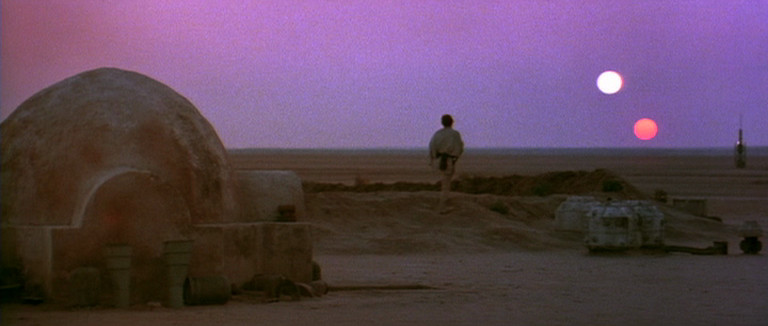Using emotional music to make an impact
Published on

As roleplayers, we are used to adventures that focus on violent conflict and stressful situations. Movies and books, however, generally put much more emphasis on human emotion than traditional roleplaying games. Even adventure movies like Star Wars devote entire scenes to the thoughts and feelings of the characters. Gamemasters who want to incorporate the same type of scenes in their games can benefit immensely from emotional music.
In this context, emotional music refers to the type of music that plays in a movie or game when the characters’ feelings, rather than their actions, are in focus. These feelings can be anything from sadness and despair to love and relief. Two common traits of such music are a lower tempo and the use of certain instruments like the violin and the piano. Notable examples include “Binary Sunset” from Star Wars: A New Hope and the opening theme to The Rock.
Emotional music requires special attention because emotional scenes, as mentioned earlier, are an unexpected part of adventures for many roleplayers. Merely describing an emotional situation is not guaranteed to evoke emotion among the players in the way that simply rolling for initiative will evoke an instinctive feeling of excitement. Likewise, merely playing emotional music will not necessarily have the same effect as playing action music. In a game where emotional scenes are rare, the combination of emotional narration and emotional music can be crucial in properly setting the mood.
A good example is a recent session of Fiasco, which primarily consisted of action scenes interspersed with dialogue and investigation. In Fiasco, which embraces dark humor, players often react to tragic fates with indifference or even amusement. This is especially true in the very last montage scene of a session, where characters usually face disaster and tragedy of some sort. For this particular session, however, I had decided to experiment with my usual repertoire of calm, suspenseful, and stressful music by adding emotional music to the mix.
When the time came for the characters to meet their grim ends, we started the emotional music—and something changed. Instead of simply thinking that the characters got what they deserved or even being amused by their failure, we found ourselves feeling sympathy for them—even for those who were clearly villains in the story. If this is the level of emotion that can be achieved in a morally ambiguous setting like Fiasco, it is easy to imagine how powerful emotional music can be in the epic tales of good and evil that are common in other roleplaying games.
Apart from conveying emotion in a scene that has already started, emotional music can also be used for setting expectations of a scene to come. If the gamemaster plays emotional music while the characters are exploring the debris of a burned-down village, the players are much more likely to contemplate the tragedy of what has happened than watch for hidden enemies or search for loot.
Emotional scenes can be demanding and risk feeling out-of-place, so you might find yourself wanting to save them for a select few moments in your sessions. In such a moment, however, emotional music can help you create the most memorable scene of an entire campaign.
If you have comments on this post, send them in and they might be featured on the blog.